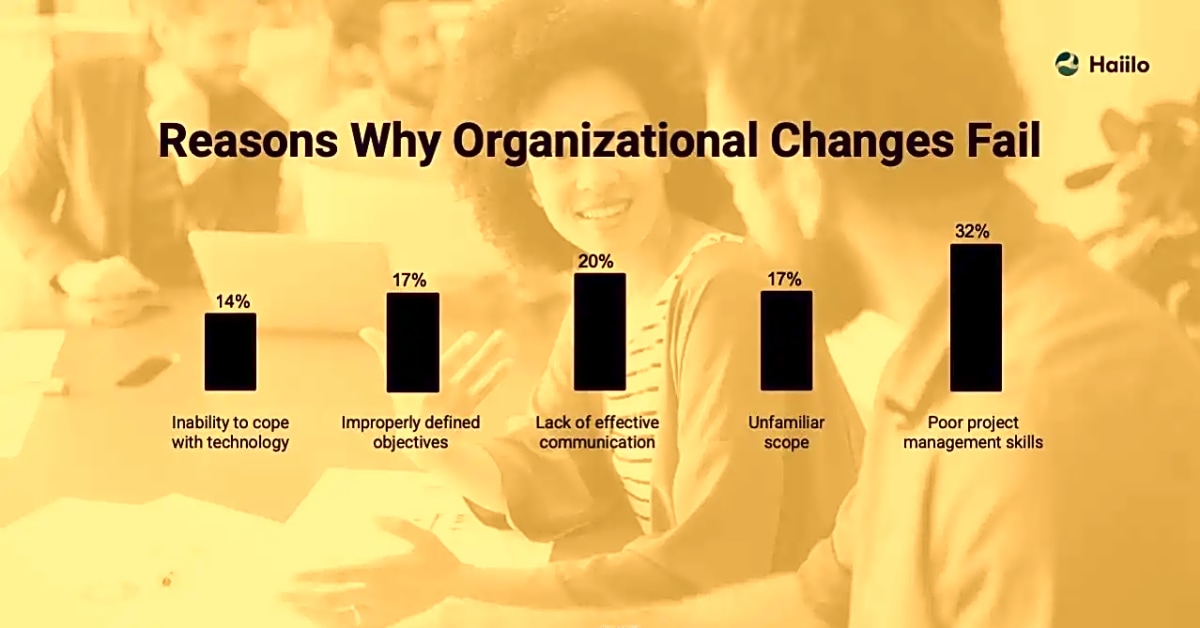Effective Techniques for Teamwork and Collaboration
In today’s fast-paced and ever-changing business world, effective teamwork and collaboration techniques are essential for success. Organizations are constantly faced with new challenges and the ability to work together as a team is crucial in overcoming them. Whether it’s managing change, implementing new strategies, or simply completing daily tasks, teamwork and collaboration play a vital role in achieving goals and driving the company forward. In this article, we will explore various techniques that can help teams improve their collaboration and achieve greater success. From communication strategies to conflict resolution techniques, we will cover it all. So, whether you are a leader looking to foster a more collaborative environment or a team member wanting to contribute more effectively, read on to discover the keys to effective teamwork and collaboration.
To begin with, it is important to understand the main goal of change management – to successfully implement and monitor changes within an organization. This requires effective leadership and strong teamwork. One technique that can help with this is creating a change management plan. This plan should outline the vision for the change, the steps required to achieve it, and the roles and responsibilities of each team member. It should also include a communication strategy to keep all team members informed and engaged throughout the process.
Another crucial aspect of teamwork and collaboration in change management is fostering a positive team culture. This can be achieved through open communication, active listening, and encouraging diverse perspectives. A leader should create a safe space for team members to voice their concerns and ideas, and ensure that everyone feels valued and heard. This will not only promote collaboration but also help to build trust within the team.
When it comes to tools for implementing change, there are various models and processes that organizations can use. These include Lewin’s Change Management Model, Kotter’s 8-Step Process for Leading Change, and Prosci’s ADKAR Model. Each model has its own unique approach but ultimately aims to guide leaders in successfully implementing change within their organization.
One key technique that can aid in managing change is effective communication. This involves not only communicating the vision and goals of the change, but also providing regular updates, addressing concerns, and celebrating successes. This will keep team members engaged and motivated, and help to prevent resistance to change.
Lastly, it is important to monitor the progress of the change and make adjustments as needed. This can be done through regular check-ins with team members, collecting feedback, and analyzing data. By involving the team in this process, leaders can foster a sense of ownership and accountability, leading to a more successful change implementation.
The Importance of Effective Communication
Effective communication is crucial in any change management process, especially when it comes to teamwork and collaboration. As organizations go through changes, it is essential for leaders to communicate clearly and consistently with their team members. This helps to build trust and understanding, and ensures that everyone is on the same page.
Open and honest communication also allows team members to voice their concerns and share their ideas, which can lead to more effective problem-solving and decision-making. It promotes a sense of ownership and accountability within the team, as everyone feels like they are a part of the change process.
In addition, effective communication helps to keep everyone updated on the progress of the change, and any new developments or challenges that may arise. This allows team members to adapt and adjust accordingly, rather than being caught off guard by unexpected changes.
Overall, effective communication is a key factor in fostering a collaborative environment and successfully managing change. It promotes transparency, trust, and accountability within the team, and ensures that everyone is working towards the same goals.
Fostering a Positive Team Culture
Teamwork and collaboration are essential for any successful organization, especially when it comes to managing change. In order for teams to work together effectively, a positive team culture must be fostered and maintained. This means promoting collaboration and trust among team members.
One way to promote collaboration is by encouraging open communication. This means creating an environment where team members feel comfortable sharing their ideas and opinions without fear of judgement or criticism. By fostering open communication, teams can brainstorm and work together to come up with innovative solutions to challenges.
Another important aspect of fostering a positive team culture is building trust among team members. Trust is the foundation of any successful team, and without it, collaboration can suffer. To build trust, leaders should lead by example and be transparent and honest in their communication with team members. It’s also important to recognize and appreciate the strengths and contributions of each team member, as this can help build trust and create a sense of unity within the team.
In addition to open communication and trust, it’s important for leaders to provide opportunities for team building. This can include team building exercises or activities that allow team members to get to know each other outside of work. By fostering a sense of camaraderie and friendship within the team, collaboration can become more natural and effective.
Ultimately, promoting collaboration and trust within a team requires strong leadership and a commitment to creating a positive team culture. By implementing these tips and techniques, leaders can foster a collaborative environment that allows teams to successfully navigate change and achieve their goals.
Monitoring Progress and Making Adjustments
In order to successfully implement change, it is crucial to constantly monitor progress and make necessary adjustments along the way. This allows leaders to stay on track and ensure that the change is being implemented effectively.
One key technique for monitoring progress is setting clear and measurable goals. This provides a benchmark for progress and allows leaders to track the success of the change implementation. It is important to involve team members in setting these goals, as it fosters a sense of ownership and accountability within the team.
Regular check-ins and communication are also essential for monitoring progress. Leaders should schedule regular meetings with their team to discuss the progress of the change, address any concerns or challenges, and make any necessary adjustments. This open communication allows for transparency and ensures that everyone is on the same page.
Data collection and analysis can also provide valuable insights into the progress of the change. Leaders can use various tools such as surveys, feedback forms, and performance metrics to gather data and analyze it to track progress. This data can also help identify any areas that may need further attention or adjustments.
When making adjustments, it is important to involve the team in the decision-making process. This not only promotes collaboration but also allows for diverse perspectives and input from team members. It is also important to communicate the reasons behind any adjustments and how they align with the overall goals of the change.
Lastly, it is crucial to remain adaptable and flexible during the change implementation process. As unexpected challenges or obstacles may arise, leaders must be willing to adjust their approach and strategies accordingly. This requires open-mindedness and a willingness to listen to feedback from team members.
Using Change Management Models and Processes
In order to successfully manage change within an organization, it is important to understand and utilize various change management models and processes. These models and processes provide a structured approach to identifying, planning, and implementing change initiatives.
One popular change management model is the ADKAR model, which stands for Awareness, Desire, Knowledge, Ability, and Reinforcement. This model focuses on individual change and identifies the key elements needed for successful change, such as creating awareness of the need for change, building desire for the change, providing knowledge and training, ensuring ability to implement the change, and reinforcing the change through feedback and recognition.
Another commonly used model is the Kotter’s 8-Step Process for Leading Change. This model emphasizes the importance of effective leadership in driving change and outlines eight steps that leaders can follow to successfully implement change, including creating a sense of urgency, building a guiding coalition, creating a vision for the change, communicating the vision, empowering others to act on the vision, celebrating short-term wins, consolidating gains and producing more change, and anchoring new approaches in the organization’s culture.
In addition to models, there are also various processes that can be utilized for implementing change. One example is the Six Sigma DMAIC process, which stands for Define, Measure, Analyze, Improve, and Control. This process is commonly used in quality management and can also be applied to change management by providing a structured approach to defining the problem or change, measuring current processes and identifying areas for improvement, analyzing data to determine root causes of issues or resistance to change, implementing improvements, and establishing control measures to sustain the change.
Creating a Change Management Plan
In order to effectively manage change within an organization, it is essential to have a comprehensive change management plan in place. This plan should outline the steps and strategies that will be taken to implement the necessary changes and ensure a smooth transition for all team members. Follow these steps to create a successful change management plan:
1. Identify the need for change: The first step in creating a change management plan is to identify the specific areas within the organization that require change. This could be due to external factors such as market shifts or internal factors such as outdated processes.
2. Set goals and objectives: Once the need for change has been identified, the next step is to set clear and achievable goals and objectives for the change. These goals should align with the overall objectives of the organization.
3. Create a timeline: It is important to establish a timeline for the change management process, including key milestones and deadlines. This will help keep the project on track and ensure that all team members are aware of their roles and responsibilities.
4. Communicate with stakeholders: Effective communication is crucial when managing change. It is important to keep all stakeholders, including employees, customers, and shareholders, informed throughout the process.
5. Develop a contingency plan: Change can often bring unforeseen challenges. It is important to have a contingency plan in place to address any issues that may arise during the change management process.
6. Train and support team members: In order for change to be successful, it is essential that team members are equipped with the necessary skills and knowledge. Provide training and support to ensure that everyone is on board with the changes.
7. Monitor and evaluate: As the change management plan is implemented, it is important to regularly monitor and evaluate its progress. This will allow for adjustments to be made if necessary and ensure that the desired outcomes are being achieved.
By following these steps, leaders can create a comprehensive change management plan that will help guide their team through any necessary changes and foster a collaborative environment.In conclusion, teamwork and collaboration are essential for successful change management. By creating a thorough plan, fostering a positive team culture, utilizing effective tools and techniques, and monitoring progress, leaders can effectively navigate and lead organizational change. Remember to involve team members in the process, communicate openly, and celebrate successes. With these techniques in place, organizations can embrace change and thrive in today’s ever-evolving business landscape.








